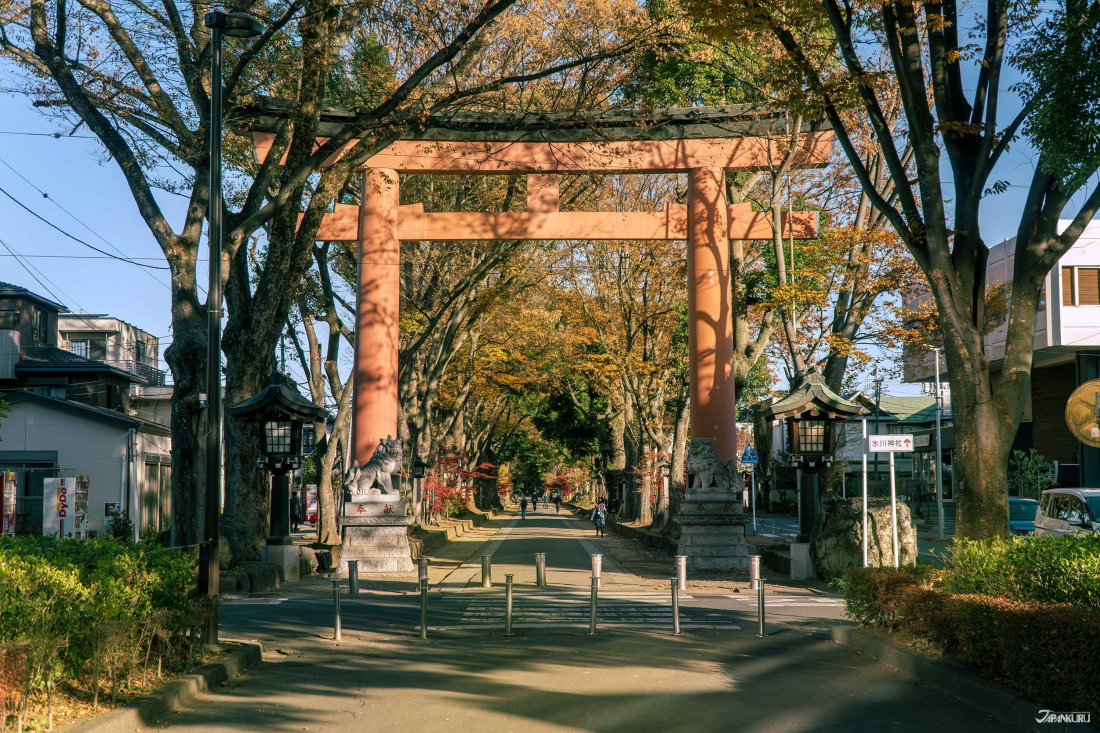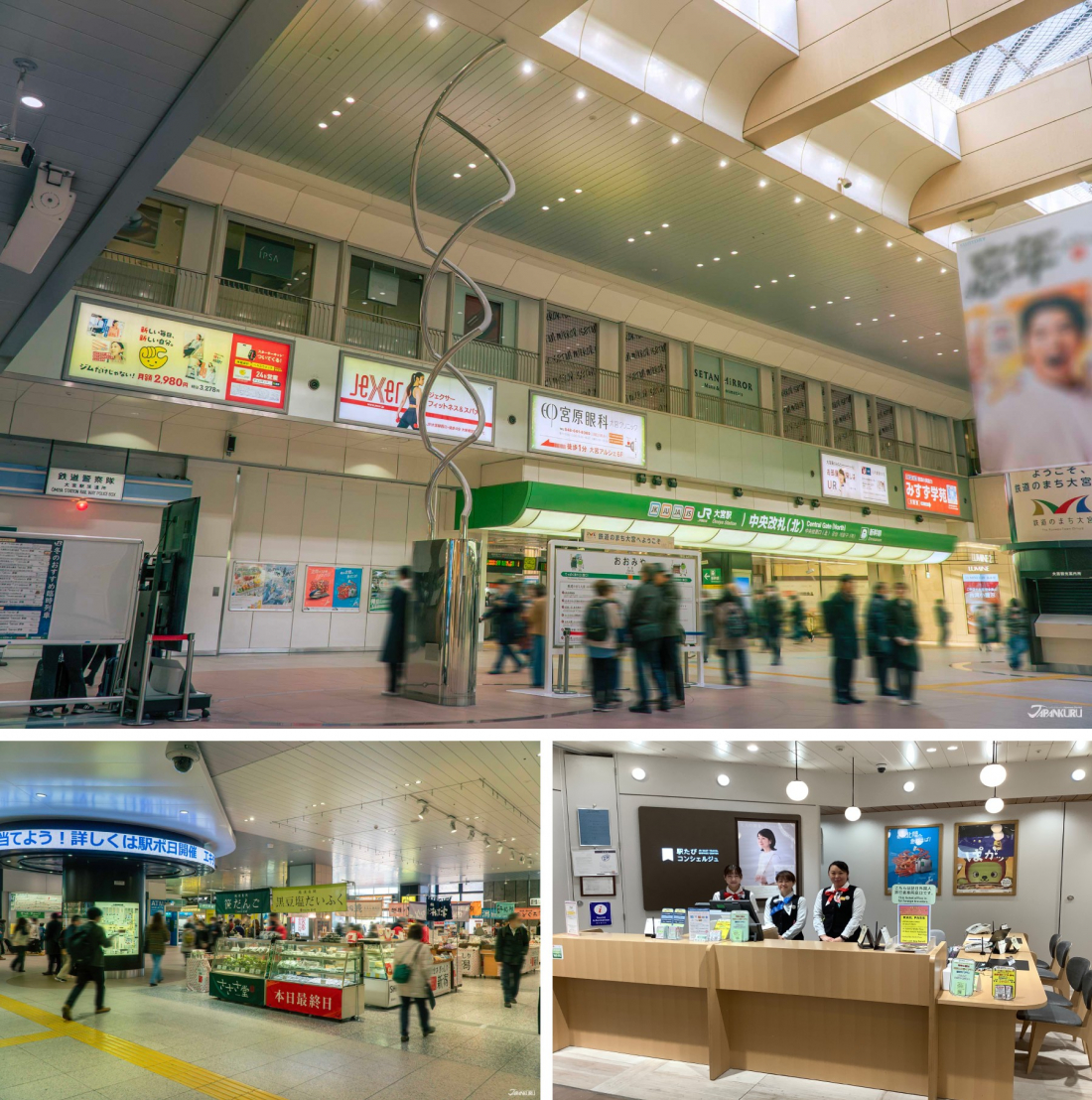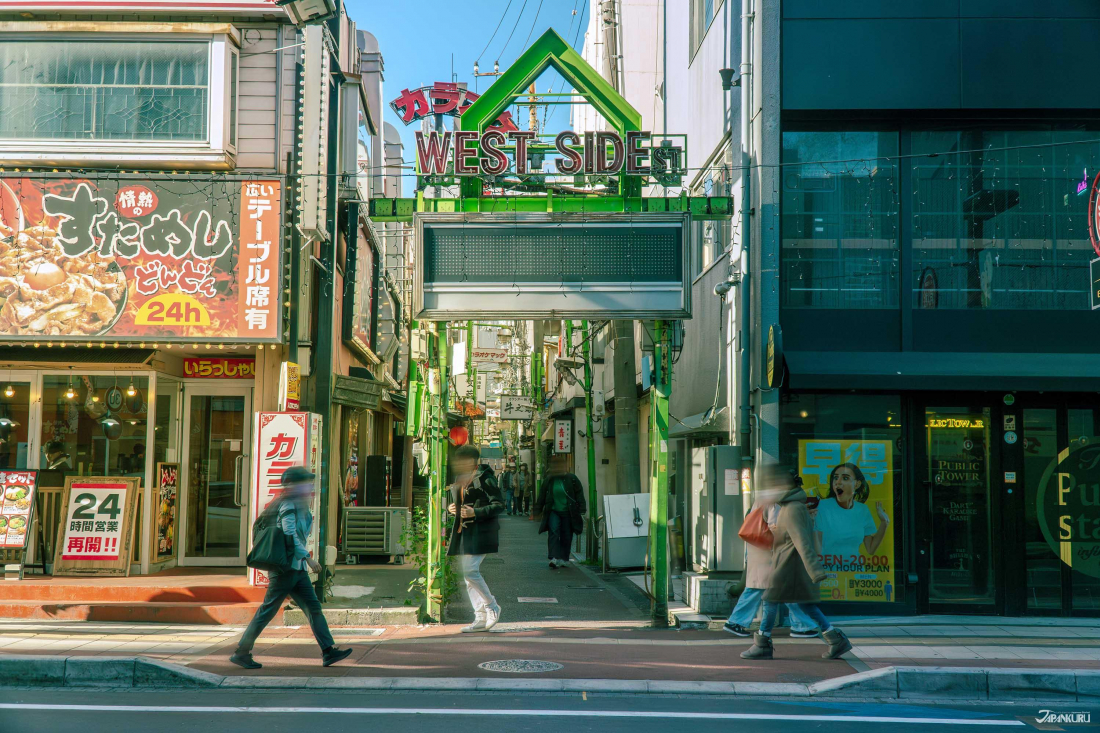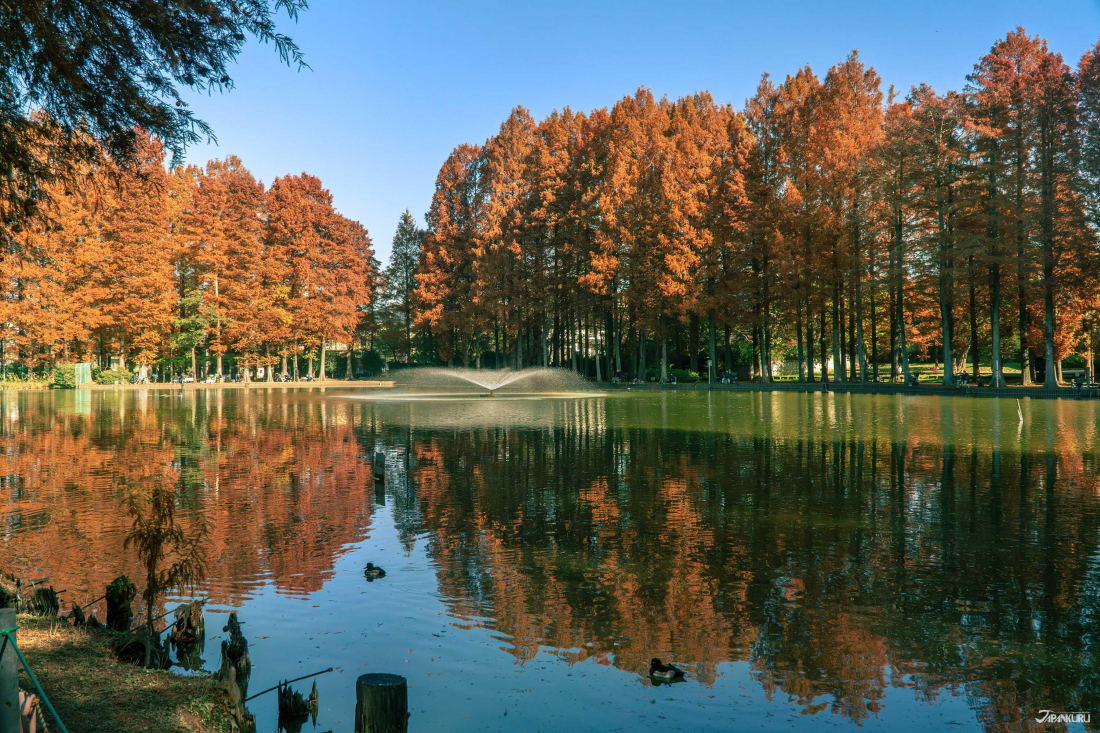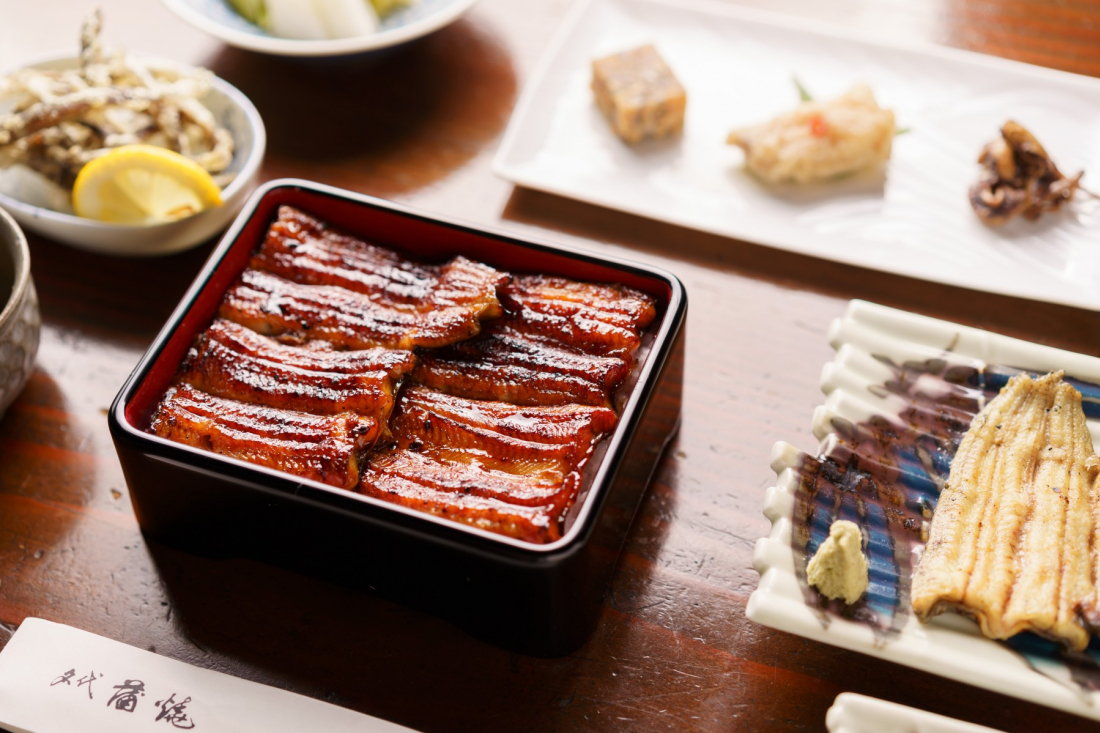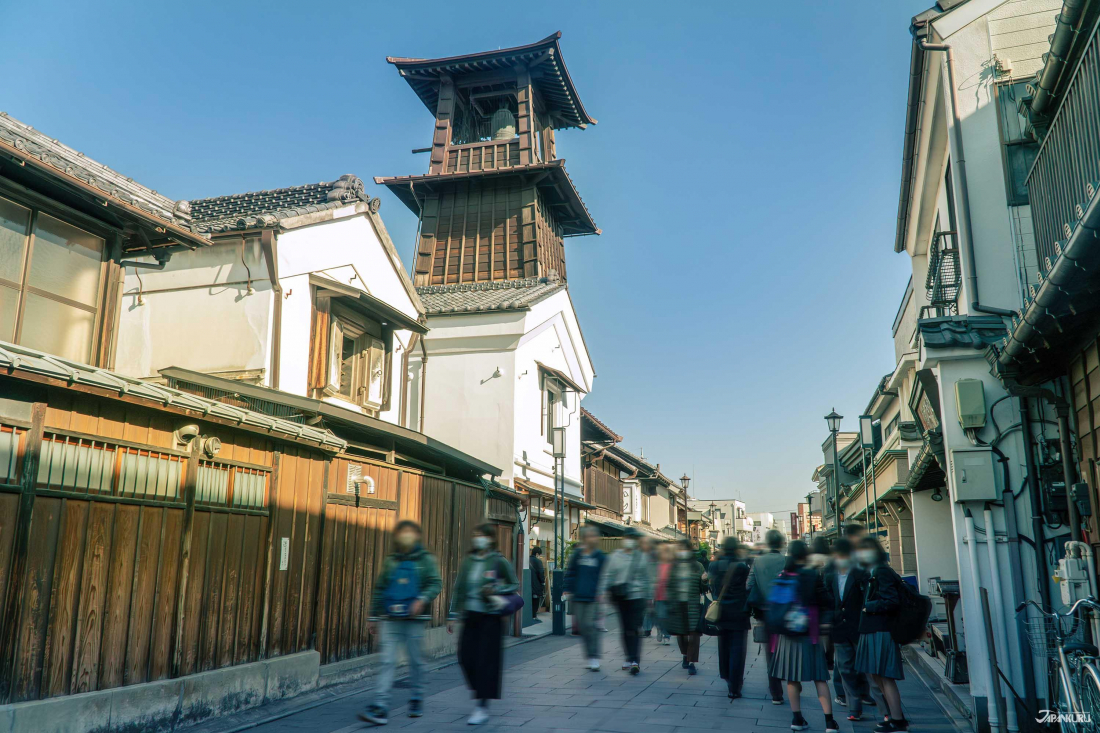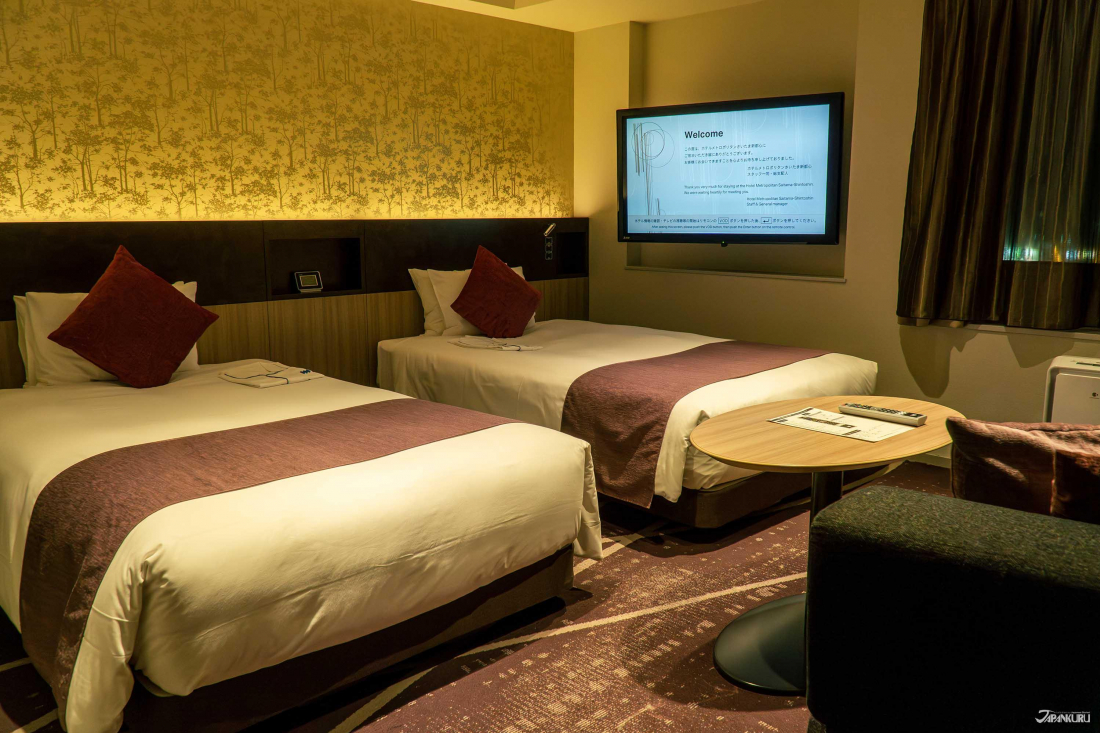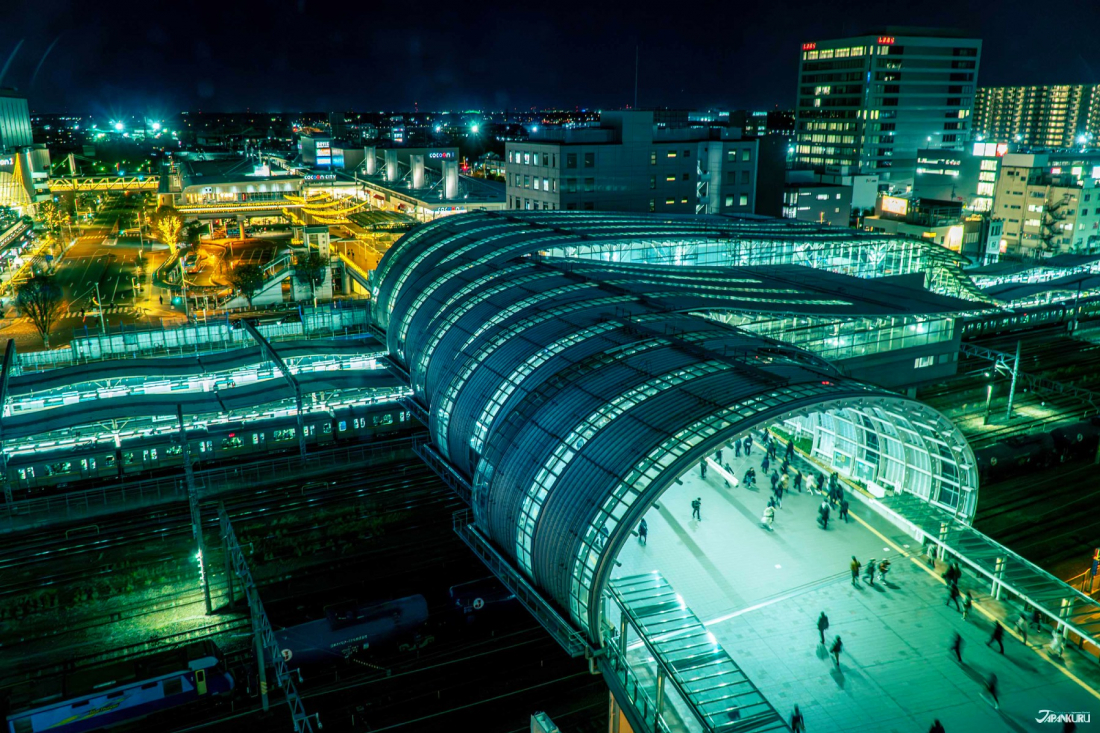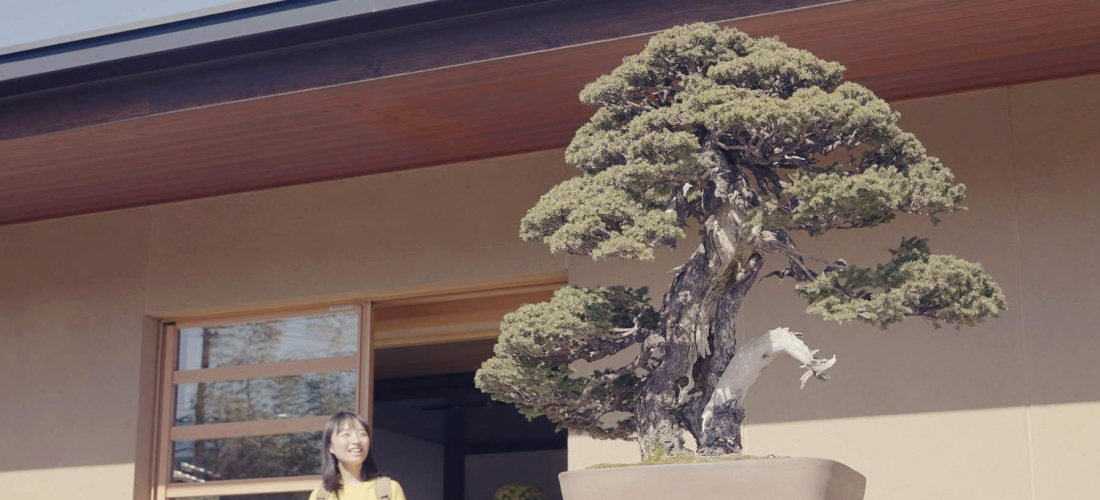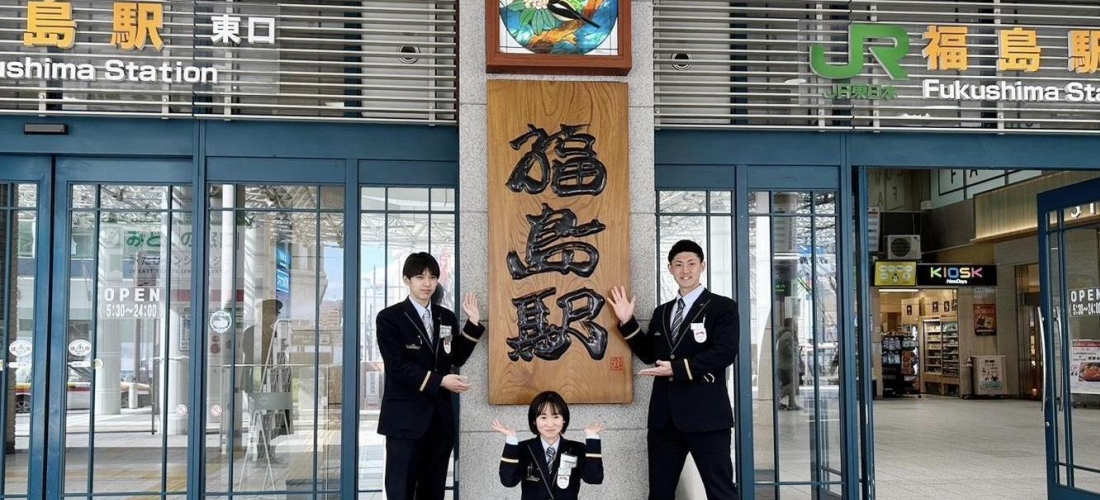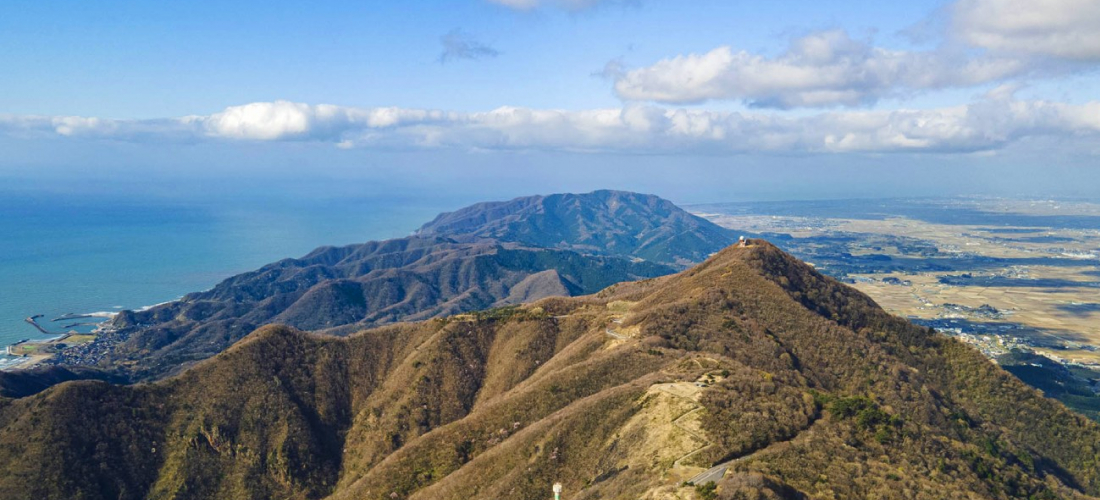
CONTENTS
Omiya Station is a stop on more than half the shinkansen routes in Japan, but the surrounding museums, shrines, gardens, and local cuisine of Saitama Prefecture still feel like some of Japan’s best kept secrets. For an off-the-beaten-path spot in Japan that’s so accessible it’s a stop on the shinkansen, try a visit to Omiya, and stay a night in Saitama!
Make Time for a Stop in Saitama
Tokyo's northern neighbor, Saitama is an unexplored treasure trove of culture, food, and fun for many travelers visiting Japan, most of whom never seem to save enough time for the trip just outside the borders of Japan's capital. Those who make the journey to Saitama are rewarded with tranquil Japanese gardens, bustling museums, ancient shrines, luxurious meals, and friendly nightlife. And yet, many tourists leapfrog the area in favor of better-known destinations. Fortunately, Saitama is easy enough to get to from Tokyo, or even better, directly from Narita or Haneda Airport. And every JR EAST shinkansen line heading into Japan's picturesque northern regions first stops in at Saitama's Omiya Station, which is both a transportation hub and a thriving center of Saitama city life. If you're planning a trip from Tokyo or its airports to Sendai, Aomori, Niigata, Nagano, Kanazawa, or any of the other well-known areas in the northeastern half of Japan, Omiya Station is already on the way! For travelers hoping to pack in as many of Japan's wonders as will fit into a journey through the country, a stop in Omiya and a quick look at Saitama is the perfect way to add a whole variety of new experiences to the trip.
To find some of Saitama's hidden treasures, we consulted with those who know best – JR staff at the local Saitama train stations! Join us as we check out their recommendations for the best things to do in Saitama.
Sightseeing Starting from Omiya Station: A Station for Train Lovers
Omiya Station was first established in 1885, when the Nippon Railway was building some of the first train lines to connect Tokyo with regions further north, and the rush of people traveling those popular routes turned it into the busy major station found today. The Omiya area entered the modern era hand in hand with the local railroads, and it's now one of a handful of "Railway Towns'' across Japan, officially dubbed "Railway Town Omiya." These days Omiya Station is one of the top 10 busiest JR EAST stations, and buses arrive every day directly from Haneda and Narita airports to start people on their journeys through Japan. The many JR EAST shinkansen lines passing through the modern Omiya Station make it one of the most convenient gateways to Saitama and northern Japan, but they also make it a wonderland for fans of bullet trains. Omiya Station has three shinkansen platforms lined up next to each other, something of a rarity even in Japan, and the central platform even has an established shinkansen viewing area for the trains. But the shinkansen platform isn't even the only popular spot for train-watchers at Omiya Station! Next door, the Omiya General Rolling Stock Center was built with tracks connecting to Omiya Station back in 1894, and it still operates as a maintenance facility for JR trains of all kinds. Take a peek at the area beyond Omiya Station's track 11, and if you're lucky, you might just be able to join some fellow railway fanatics in checking out a super rare train on its way for repairs.
Omiya Station is bustling on both sides of the ticket gates, with a whole mall of shops and restaurants attached to the station facilities, event spaces often used to sell regional products from around Japan, and ample options for eki-ben (駅弁, train station bento boxes) to eat during your next shinkansen ride. A hint from the Omiya Station Staff: if you're not sure which eki-ben to choose, they recommend the "Tohge no Kamameshi" bento from Oginoya, the "Niku Domannaka" bento that features Yamagata "domannaka" rice and wagyu beef, or one of the handful of heated (!) bento boxes made with Sendai beef tongue! But one spot that travelers will definitely want to check out in the station is the JR EAST Travel Service Center, where JR travel experts are waiting to help visitors plan the trip of their dreams, or just offer a helpful suggestion or two. It's a great place to get some fresh ideas to add to your travel plans, and the Station Work booths hidden away beside the counter are probably the best place to find a little peace and quiet while waiting for a train, according to Omiya Station staff.
If you need a meeting point to find your friends or family after exploring the station, Omiya locals will tell you that the huge metal "Mamenoki" (豆の木, "Bean Tree") is everyone's favorite spot. Meet back at the Mamenoki before you get on the train, or before you head out of the station and into the Omiya area.
Near the station, Omiya's Railway Museum is worth a visit whether you're a railway fanatic or not, to see the fabulous rolling stock room filled with real trains both old and new, along with one of Japan's largest model railway dioramas, and hands-on exhibits on everything from the science of railway mechanisms to music and movies inspired by trains. Their many railway simulators are especially popular with museum visitors, offering the chance to drive a (simulated) shinkansen Hayabusa and a (simulated) steam locomotive, or even try working as a train conductor by opening train doors and making announcements. If you're feeling hungry, you can pick up a real eki-ben and eat your bento in an old train car! To get to the museum you can take Omiya's "Saitama New Urban Transit New Shuttle" just one stop to Tetsudō-Hakubutsukan Station, which is directly connected to the museum entrance.
The Railway Museum (鉄道博物館)
3-47 Onaricho, Omiya Ward, Saitama
Hours: 10:00 – 17:00 (closed Tuesdays & New Year's holidays)
Admission: adults 1,300 yen | elementary, middle, and high school students 620 yen | children 3 and older 310 yen (discounts available for advance tickets)
*Ticket prices due to change from April 2024.
Access: 2 min on the Saitama New Urban Transit New Shuttle to Tetsudō-Hakubutsukan Station
Official Website (en)
For a dose of rich local culture, spend the evening in the area around Omiya Station for good food and plentiful drinks. The many railway workshop workers populating the area for the last century have made napolitan pasta (spaghetti with ketchup sauce) a local favorite, to the point that many local restaurants specialize in the dish, and belong to the "Omiya Napolitan Association." (Find a map of popular napolitan restaurants on the association's homepage.) For izakaya pubs buzzing with the locals, plus other bars and general nightlife, a couple of the streets near the station are particularly popular after dark. According to the Omiya Station staff, Suzuran-dori St. is the place to go for Japanese chains and bigger places where they're more likely to speak English, whereas nearby West Side St. has more little hole-in-the-wall bars and restaurants. No matter which establishment you end up in, though, you'll get a good idea of what Omiya nightlife is all about!
See More of Saitama: Gardens, Food, Shrines, and Picturesque Edo Streets
Naka-Urawa Station: A Walk in the Park
While Omiya Station might be a lively transportation hub, it's not the only place to spend time in Saitama, and many other stations nearby offer very different experiences. The quiet neighborhood around Naka-Urawa Station is full of locals going about their everyday life, and nearby Besshonuma Park is a peaceful oasis of striking dawn redwoods (also called metasequoias) reflected in the placid waters of a large marsh, populated with ducks and koi fish. The park is the perfect place to get a breath of fresh air and enjoy a walk among the redwoods, and you can savor the dappled sunlight coming in through the tree canopies. Autumn might be the most beautiful time of year to visit Besshonuma Park, especially once the tall trees go from green to a warm shade of orange, but it's worth seeing all year round. Even after dark, thanks to the lamps along the path that light up the trees from below!
Besshonuma Park (別所沼公園)
4-12-10 Bessho, Minami Ward, Saitama
Access: 4 min on foot from Naka-Urawa Station
Official Website (jp)
Urawa Station: Eel Cuisine & Dango for the Foodies
Ask the locals around Urawa Station, and they'll tell you that there's a bit of a long-term feud between the Urawa and Omiya areas of Saitama, with each one vying to prove they're the best. But there's no reason why travelers shouldn't get to visit both and enjoy what makes each of the areas so special! Urawa Station isn't a stop on the shinkansen, so it doesn't quite measure up to Omiya Station in terms of size, but it has an even longer history and celebrated 140 years of railway service in 2023. Urawa Station is also a station overflowing with love for the local soccer team, with a whole section called the "Urawa Soccer Street" dedicated to the Urawa Red Diamonds (or "Urawa Reds"). Urawa's hometown pride is evident wherever you look, giving the whole area a convivial atmosphere that's fun to be around.
The Urawa Station staff were more than happy to give us recommendations for exploring Urawa, and the area around the station has plenty to see. The nearby temple of Gyokuzoin dates back to the Heian period (794-1185), when it's said it was founded by the famous monk Kobo Daishi. In the other direction, Tsuki Shrine is somewhere around 2,000 years old, and not only is the ancient shrine guarded by rabbits instead of lion dogs, but it's also one of the few shrines in Japan that has no torii gate at all! (Shrine legend says that the gate was removed because it got in the way of offerings sent to the yearly gathering of Japan's eight million gods in Izumo.) But most of all, Urawa was once a stop on Japan's major Nakasendo road, a route that connected Edo (modern-day Tokyo) to Kyoto, Japan's ancient capital. And because of its particular location, Urawa has been the go-to lunch spot for travelers since the Edo period (1603-1868).
Though it's hard to imagine these days, Saitama was once full of the kind of marshy land where eels thrive, and to this day the area is known for serving some of Japan's best "unagi." In the days when samurai followed the Nakasendo route to traverse Japan, Urawa was just the right distance from Tokyo for travelers to stop in for a hearty midday meal before they were back on their way, and you can follow in their footsteps by taking a break from your own journey at Nakamuraya. This family-owned restaurant specializes in unagi kabayaki (grilled eel), and the eel is cooked over binchotan charcoal while being basted with their special house-made sauce for rich, mouth-watering flavor that goes perfectly over a bed of warm white rice. Order the unaju for a taste of Urawa history!
Nakamuraya (中村家)
3-2-12 Takasago, Urawa Ward, Saitama
Hours:
Mon ~ Fri: 11:00 – 14:30 / 17:00 – 21:00 (last order 19:50)
Sat: 11:00 – 14:00 / 17:30 – 20:00 (last order 19:30)
(closed Sundays)
Access: 7 min on foot from Urawa Station
Official Website (jp)
Saitama has some of the highest rates of dessert consumption in Japan, so for something a little sweeter, look no further than the dango specialty shop Tokiwa Dango. Dango are chewy little Japanese dumplings made of rice flour (sometimes called mochi), and at this shop in front of Urawa Station, they top them with slabs of sweet red bean paste or a thick dusting of kinako (roasted soybean powder). The shop interior has a handful of tables and the cozy feel of an old-fashioned Japanese cafe, providing the perfect place to relax and enjoy the simple flavors of these traditional sweets.
Tokiwa Dango (ときわだんご)
1-12-1 Takasago, Urawa Ward, Saitama
Hours: 10:00 – 20:00
Access: 2 min on foot from Urawa Station
Official Page (jp)
Toro Station: Become a Bonsai Expert
It's hard to find a hobby that feels more Japanese than bonsai, and there's nowhere better to learn about this unique part of Japanese culture than the Omiya Bonsai Art Museum. Close to a century ago, a group of bonsai specialists moved from Tokyo after the Great Kanto Earthquake, settling in Omiya and bringing their art with them. The area was named the Omiya Bonsai Village, and to this day it's still dotted with bonsai tree specialist shops and related facilities, including this museum. A tour of the Omiya Bonsai Art Museum starts with a trip through the Collection Gallery, to give visitors a quick but thorough introduction to the art of bonsai, perfect for the uninitiated. On one wall, simple displays go over the features that distinguish different kinds of bonsai, from the type of tree to the way it's planted and pruned. On the other wall, a varied collection of trees and bonsai accessories give visitors a chance to train their eyes. After learning about what makes each bonsai tree unique and admiring the museum's "zashiki-kazari'' displays set up within traditional tatami mat rooms, guests get to explore the bonsai garden, which contains dozens of carefully maintained examples of the art. The tiny trees rarely top more than a couple meters in height, and the diminutive stature often seems to contradict their true age – many of the bonsai have been alive for over a century, and at least one is literally over 1,000 years old. Of course, the art of bonsai is all about cultivating the majestic grace of a full-grown tree in miniature! Head up to the museum's second floor to look out over the garden and marvel at the wonder of these trees that have been so carefully taken care of by so many generations of bonsai lovers.
Omiya Bonsai Art Museum, Saitama (さいたま市大宮盆栽美術館)
2-24-3 Torocho, Kita Ward, Saitama
Hours:
Mar ~ Oct: 9:00 – 16:30
Nov ~ Feb: 9:00 – 16:00
(final admission 30 min prior to closing, closed Thursdays)
Admission: adults 310 yen | high school/university students & seniors 150 yen | children 100 yen
Access: 5 min on foot from Toro Station
Official Website (jp)
Kawagoe Station: A Visit to “Little Edo”
Take a trip back in time with an easy train trip from Omiya to Kawagoe, only about 20 minutes with JR! Kawagoe is famous for its beautifully preserved streets dating back to various periods in Japan's past, and while you can find some very chic retro architecture from the Taisho period (1912-1926) on Taisho Roman Yume-dori, many of the most popular areas date back to the Edo era. Slip on a kimono and walk down streets like Kanetsuki-dori to feel like you've stepped back into a scene from historic Tokyo (the origin of the nickname "Little Edo"), and make sure to grab a picture of the 400-year-old “Toki no Kane” (時の鐘/“Bell of Time”) that gave the road its name.
With so many people strolling the streets of Kawagoe, the historic district has also become a hotspot for local street food. The busy streets are lined with shops selling Japanese street food classics like dango or senbei (rice crackers), and you can even find Japanese-style unagi omelettes or unagi on a stick for sale from the counter at Unagi Denbe. But these days, Kawagoe's most popular local snacks all revolve around sweet potatoes! Walk down the street and you'll often see fellow sightseers holding cups filled with what look like long slices of sweet potato. If you don't mind waiting in line, then you too can try the crispy-crunchy osatsu chips (sweet potato chips) from Koedo Osatsuan, which come with a light sprinkling of salt and a sweet or salty dipping sauce – salty butter sauce or purple sweet potato cream are the most popular.
Unagi Denbe (うなぎ傳米)
1-10 Saiwaicho, Kawagoe, Saitama
Hours: 11:00 – 17:00 (closed Wednesdays)
Access: 25 min on foot from Kawagoe Station, or take a bus to either Otemachi or Ichibangai bus stop
Official Website (jp)
Koedo Osatsuann (小江戸おさつ庵)
15-21 Saiwaicho, Kawagoe, Saitama
Hours:
Weekdays: 10:30 – 16:30
Weekends/Holidays: 10:30 – 17:30
Access: 28 min on foot from Kawagoe Station, or take a bus to either Otemachi or Ichibangai bus stop
Official Instagram
To escape the hustle and bustle of Little Edo, slip away down the back alleys to find the tranquil hideaway of Tantoku Garden, a cozy Japanese garden behind a traditional house built at the turn of the century. Though small in size, the garden is full of details that make it irresistible, like a tiny shrine devoted to the god Inari with a base made from Mt. Fuji lava rock, a compact Zen garden with a carefully placed stone resembling a ship full of treasures, and the gurgling sound of water flowing past small pebbles below the hand-washing fountain. Just a short visit to the garden is enough to leave you feeling refreshed, but Tantoku also offers the chance to visit the house for a tea ceremony experience where you prepare your own traditional sweets, to really soak up the traditional atmosphere. And if you fall in love with the Tantoku house and its garden (which you might), you can even book a night to have the place all to yourself! The overnight accommodations include access to the tea room detailed in rich ebony, and a luxurious open-air bath.
Tantoku Garden (丹徳庭園)
1-8-2 Rokkenmachi, Kawagoe, Saitama
Hours: 11:00 – 15:00 (closed Tuesdays, Wednesdays, Thursdays)
*Reservations required.
Official Website (jp) | Official Instagram
Saitama-Shintoshin Station: Overnight in Saitama
After a day of seeing the sights, Saitama-Shintoshin Station offers an ideal place to end the night. To the east of the station, the Cocoon City complex of shopping and dining options offers a place to wind down for the night and grab a bite to eat. West of the station, the Keyaki Hiroba plaza often hosts markets and light displays for a little bit of evening entertainment. And just a few steps outside of the station, Hotel Metropolitan Saitama-Shintoshin provides a comfortable place to spend the night with Superior Single, Double, and Twin rooms, alongside the more deluxe Executive Twin rooms. This four-star hotel is known as the go-to spot for travelers going to events at the nearby Saitama Super Arena, but it's actually a favorite for railway fanatics too, thanks to the birds-eye view of Saitama-Shintoshin Station offered from the stationside guest rooms.
Guests also choose the Hotel Metropolitan Saitama-Shintoshin for its breakfast buffet, which takes full advantage of fresh eggs, soy sauce, and other ingredients grown or produced locally to create flavorful Japanese and Western breakfast staples. Their quiche and their "inaka-jiru" miso soup always get rave reviews, and the house-made dressings at the salad bar are so popular that the staff apparently get asked to sell bottles of it with some frequency. Unfortunately, the dressing isn't available for sale, but the hotel's custom-made coffee and tea blends are! At other times of day, the hotel cafe also offers lunch with a la carte mains (along with dinner on Saturdays). The desserts available with the lunch buffet often include seasonal specialties, like sweets made with local "Amarin" strawberries (specially developed by a Saitama research facility), available for a limited time (Jan. 15 ~ Feb. 29, 2024). Plus, at night, the cafe and lobby walls also serve as a huge canvas for seasonal projection mapping!)
Hotel Metropolitan Saitama-Shintoshin (ホテルメトロポリタン さいたま新都心)
JR Saitama-Shintoshin Bldg 5~10F, 11-1 Shintoshin, Chuo Ward, Saitama
Check-in/Check-out: 15:00~ / ~11:00
Access: 1 min on foot from Saitama-Shintoshin Station
Official Website (en)
After a night in Saitama, a trip to Hikawa Shrine is the perfect way to enjoy one last bit of local sightseeing before moving on. There are actually 250 Hikawa Shrines around Japan's Kanto region, but this one (officially called the Musashi Ichinomiya Hikawa Shrine) is the head branch of them all, and shrine tradition states that it was established in the year 473 BCE. Yes, that's before the common era. These days the shrine's big claim to fame is the official shrine path leading to the entrance, which stretches a full two kilometers straight out from the entrance, with the very furthest shrine gate located just about a block from Saitama-Shintoshin Station (the same station as the hotel). It's the longest shrine path in Japan, and although it takes about 30 minutes from start to finish, the picturesque tree-lined walk is a refreshing way to start the day. Once you reach the end, you're rewarded with the shrine itself, with its grand halls and wide-open grounds.
If you'd rather skip some of the 30-minute walk to get to the shrine, you can start walking from Omiya Station instead. It's a little bit closer!
Musashi Ichinomiya Hikawa Shrine (武蔵一宮氷川神社)
1-47 Takahanacho, Omiya Ward, Saitama
Hours: 6:00 – 17:00
Access: about 30 min on foot from Saitama-Shintoshin Station via the official shrine path, or 18 min on foot from Omiya Station
Official Website (jp)
In recent years, little cafes have also started popping up along the sides of the Hikawa Shrine path, and there are now several places to stop for a coffee break along the way. One of these is Tokiwa Coffee Roasters (no relation to the dango shop), which offers as many as 30 different types of coffee beans to choose from, and roasts the beans fresh for each order! Savor your fragrant cup of fresh coffee while relaxing in the indoor or outdoor seating areas, or bring it with you as you walk along the shrine path. When you're ready to go, Omiya Station is just an easy walk away!
Tokiwa Coffee Roasters Omiya Hikawa Sando Branch (常盤珈琲焙煎所 大宮氷川参道店)
1-173-2 Takahanacho, Omiya Ward, Saitama
Hours: 9:00 – 19:00
Access: 12 min on foot from Omiya Station
Official Website (jp)
Make the Most of A Short Trip to Saitama
There's nothing better than a shinkansen adventure through Japan, and one of the best things about taking a train (instead of a plane or bus) is all the stops you can make along the way! So next time your travel plans include a trip to the green mountains of Japan's western coast (the Hokuriku/Shinetsu regions) or the snowy northern reaches of the main island (the Tohoku region), add a stop in Omiya and a little trip to Saitama to your itinerary. For foreign travelers already using JR passes for a great deal on unlimited rides (on JR lines and more), this is a great way to get the most out of the railway pass. Stop in Saitama to add a little extra to your next trip to Japan, with fresh flavors from the Edo era, traditional gardens, a bonsai oasis, and over a century of railway history!
*The information above is accurate as of December 2023.
Details
NAME:Omiya Station (大宮駅)
PROFILE
Follow us @Japankuru on Facebook, Instagram, and Twitter!
COMMENT
FEATURED MEDIA
VIEW MORE
・Accommodations for Odaiba Sightseers: Mitsui Garden Hotel Toyosu PREMIER ・住宿推薦 三井花園飯店 豐洲普米爾 ・오다이바 관광 맞춤 숙소: 미츠이 가든 호텔 토요스 프리미어 ・ค้างคืนที่ Mitsui Garden Hotel Toyosu Premier โรงแรมสำหรับผู้มาเยือน Odaiba #japankuru #odaiba #tokyo #tokyotrip #japantrip #japantravel #mitsuigardenhotel #mitsuigardenhoteltoyosupremier #tokyohotel #odaibahotel #toyosu #tokyoview #tokyobay #rainbowbridge #미츠이가든호텔토요스프리미어 #오다이바 #오다이바맛집 #오다이바건담 #오다이바해변공원 #오다이바야경 #오다이바온천

Nagano Prefecture is famous for delicious soba noodles, and in the city of Ueda, you can learn from the experts! Local aunties run this cooking class, teaching you everything you need to know to make your own delicious plate of soba noodles entirely from scratch. #japankuru #soba #sobanoodles #japanesefood #travelexperience #japan #japantrip #ueda #nagano #japaneseculture #japanexperience #daytrip #daytour #cookingclass #japanesecookingclass #上田市 #そば作り #소바체험 #우에다시 #나가노여행 #일본소바

Kuramae Shrine is known for its early-blooming cherry blossoms and its gorgeous golden mimosa blooms, making it a great sakura spot for travelers arriving in Tokyo a little early for the main cherry blossom season. It’s also tucked away in a neighborhood packed with trendy cafes and coffee shops. Kuramae is a lovely place to spend the day. 🌸☕️ ・ #japankuru #kuramaeshrine #kuramae #tokyo #tokyotrip #cherryblossom #cherryblossoms #mimosa #tokyocherry #花見 #蔵前神社 #ミモザ #桜 #東京 #Japan #日本 #일본 #Japon #ญี่ปุ่น #Japão #Japón #япония #japantravel #日本旅行 #日本旅遊 #일본여행 #japan_of_insta #japantrip #traveljapan

Local Japanese Favorites at the Okinawa Don Quijote ② Ohta’s Isan, the digestive aid of the Japanese people ・ ・ 2024唐吉訶德不可不知的好物推薦② 日本國民消化小幫手:太田胃散 ・ ・ 오키나와 돈키호테 숨은 꿀템2. 일본 국민 소화제! 오타이산 #japankuru #okinawa #donki #沖縄 #오키나와 #오키나와여행 #오키나와돈키호테 #일본쇼핑리스트 #오타이산 #일본소화제 #太田胃酸 #ohtasisan

Happy Valentine's Day from the Japankuru team! May your day be full of sweet chocolates and sweet nothings. 💕 Or, if you're like a rising number of women in Japan, take the opportunity to treat yourself! 🍫💝💆 • Find out more at Japankuru.com! (Link in bio.) • #japankuru #valentinesday #valentineschocolate #japanesechocolate #japaneseculture #バレンタイン #バレンタインチョコ #メリーチョコレート #Japan #日本 #일본 #Japon #ญี่ปุ่น #Japão #япония #japantravel #日本旅行 #日本旅遊 #일본여행 #japan_of_insta #japantrip #traveljapan #japan🇯🇵 #japanlife #igerstokyo #explorejapan #japanfocus #enjoyjapan #japantravelphoto

Japankuru Coupon: BEAMS fashion, accessories, lifestyle goods, and more! BEAMS 5% Discount Coupon ▶︎ Validity Dates: February 1 ~ February 29, 2024 ▶︎ Discount: 5% off all products in-store ▶︎ Usable At: BEAMS stores throughout Japan (all stores except BEAMS JAPAN Izumo and BEAMS JAPAN Nikko) ▶︎ Details: Please present this coupon page before payment to receive your discount! This coupon is also valid in combination with tax-free discounts/refunds for foreign tourists. (Tax-free shopping is only available at some BEAMS locations.) Some products may not be eligible for discount. ・ ・ ・ BEAMS - JAPANKURU優惠折扣券 BEAMS 2024年2月限定特別優惠券 店內全部商品95折 ▶︎使用期間:2024/2/1到2024/2/29 ▶︎使用範圍:日本全國店舖 ▶︎使用方法:結帳時請務必事先向店員出示本優惠券,若未出示本優惠券恕無法享有本優惠。本優惠券可搭配免稅優惠一併使用,但不排除特定門市無法使用本優惠券。此外,不排除特定商品不適用本優惠券。 ・ ・ ・ 「빔즈(BEAMS) x 재팬쿠루(JAPANKURU)」스페셜 할인 쿠폰 빔즈(BEAMS) 5% 할인 쿠폰 ▶유효기간: 2024년 2월 1일 ~ 2월 29일(한 달 동안) ▶︎할인율: 매장 내 전 상품 “5% 할인" ▶︎해당 매장: 일본 전국 빔즈 (BEAMS) 매장 (BEAMS JAPAN이즈모、BEAMS JAPAN닛코는 쿠폰 할인 대상 제외 점포입니다) ▶︎상세 내용: 결제 전 본 쿠폰 페이지를 제시하면 정가대비 5% 할인된 금액에 구매하실 수 있습니다! 본 쿠폰은 외국인 관광객들을 대상으로 하고 있으므로 면세 혜택(빔즈 일부 매장)과 별도로 추가 할인이 가능합니다. (일부 매장 및 제품은 대상에서 제외될 수 있습니다.) #japankuru #beams #beamsjapan #beamsginza #coupon #재팬쿠루 #빔즈재팬 #빔즈 #일본여행 #일본쇼핑 #일본쇼핑리스트 #銀座 #東京 #tokyoshopping #japankurucoupon

